Castelfiorentino and Certaldo: the Francigena road between art, history and devotion
From Milan Central Station to Florence Santa Maria Novella Station: Freccia Rossa Train at 08:20
Meeting point: 10:15 at Florence Santa Maria Novella Station and transfer by bus to Castelfiorentino.
11.00: Castelfiorentino is the natural crossroads of the Valdelsa. The town is located at the intersection of two important roads of Tuscany, the Via Francigena and Via Volterrana and in the Middle Ages it was just a fortified castle on the hill that overlooks nowadays the town of Castelfiorentino.
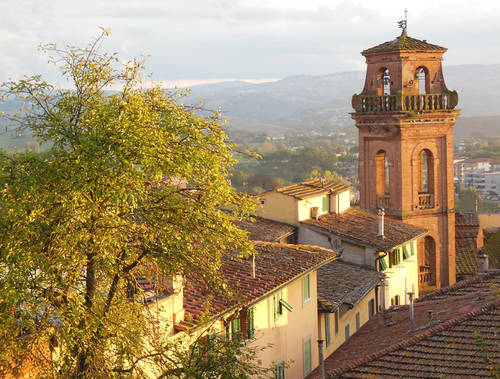
CASTELFIORENTINO (FI), Overview – © public domain
Due to its location, it was a place of transit for pilgrims and travelers who went to Rome from Northern Europe. Nowadays many “pilgrims” still travel along the ancient Via Francigena, immersing themselves in the nature and enjoying the beautiful landscape of the Tuscan countryside. In the century of the Renaissance, along the stretch of the Francigena road that passed through Castelfiorentino, the Florentine Master painter Benozzo Gozzoli frescoed two monumental tabernacles-oratories. Today these two tabernacles can be admired in their original size in a new museum, the Benozzo Gozzoli (BeGo) Museum in Castelfiorentino where the tour starts.
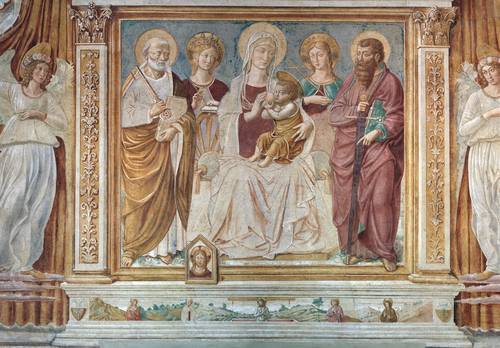
CASTELFIORENTINO (FI), Museo BeGo, Tabernacolo della Madonna della Tosse, detail – ©BeGo Museo Benozzo
12.00: the tour goes on with the visit of the Museum of Sacred Art of Santa Verdiana that collects a remarkable heritage of the Sanctuary next to and the nearby churches. It is located right under the arcade of the 18th century Sanctuary of Santa Verdiana.
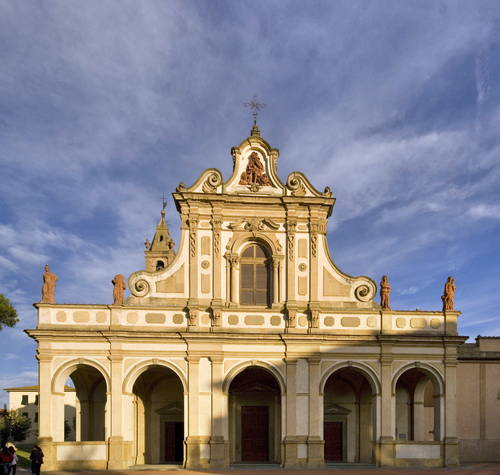
CASTELFIORENTINO (FI), Sanctuary of Santa Verdiana – ©Propositura di Santa Verdiana
The most representative artwork is a wooden altarpiece with Madonna with Child attributed to Cimabue and Giotto and other works of art by Master painters such as Corso di Buono, Taddeo Gaddi and Francesco Granacci.
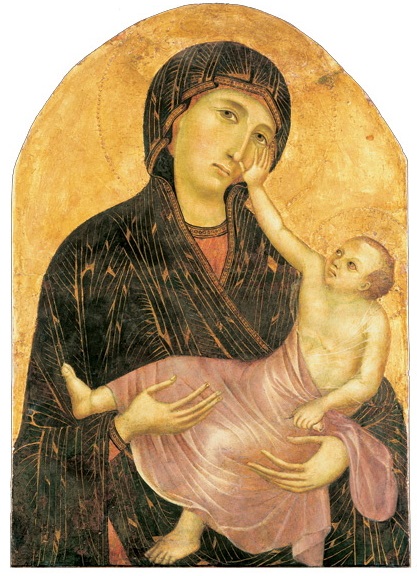
CASTELFIORENTINO (FI), Santa Verdiana Sacred Art Museum, Cimabue Madonna with Child – ©Propositura di Santa Verdiana
13:00: light lunch offered by Teatro del Popolo of Castelfiorentino
14:00: departure by bus to Certaldo
The upper town, rare example of a still intact medieval village, is peculiarly situated on the top of a hill. Built between the 12th and the 15th centuries, Certaldo Alto hosts craft shops, taverns, typical restaurants and a museum system which includes Palazzo Pretorio (The Governor’s palace), Boccaccio’s house and the Sacred Art Museum, with remarkable paintings and sculptures.

CERTALDO (FI), Overview – ©Comune di Certaldo
14:30: Palazzo Pretorio
Built during the 12th century, Palazzo Pretorio is the most representative monument in Certaldo. It was once the political headquarters of Certaldo. We can still visit its prisons, the hearing room, the archive, the chapel and the private apartments of the Vicar. On the facade and in the courtyard you can see several coats of arms, each of which represents the effigy of a vicar who lived here and ruled Certaldo. In the nearby church of Saint Thomas and Prosper you can admire interesting frescoes and sinopias dating back to the 15th and 16th centuries and a tabernacle frescoed by Benozzo Gozzoli and his studio.
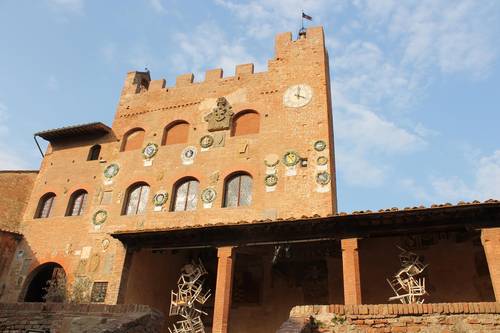
CERTALDO (FI), Palazzo Pretorio – ©Comune di Certaldo
15:30: Boccaccio’s house
Almost completely rebuilt after World War II, Giovanni Boccaccio’s house is nowadays a museum. Inside you can admire a fresco painted by the poet Pietro Benvenuti (1820), some rare pairs of late-medieval shoes found during restoration works, and a specialized library which collects a very wide range of books written by and about Boccaccio, published all over the world.

External view of the Boccaccio´s house tower – ©Comune di Certaldo
16:30: Nail Museum
Peculiar collection – created by the artist-carpenter Giancarlo Masini – where you can find nails of all kinds and ages, together with farming culture tools and wooden sculptures.
17:00: Sacred Art Museum
The Museum is housed in a former 15th century Augustinian Convent. The exhibition halls are dedicated to painting (from the late 13th century on), sculptures, sacred vestments and furnishings. On the walls you can admire works of Cenno di Francesco di Ser Cenni, Segna di Bonaventura and Ugolino di Nerio.
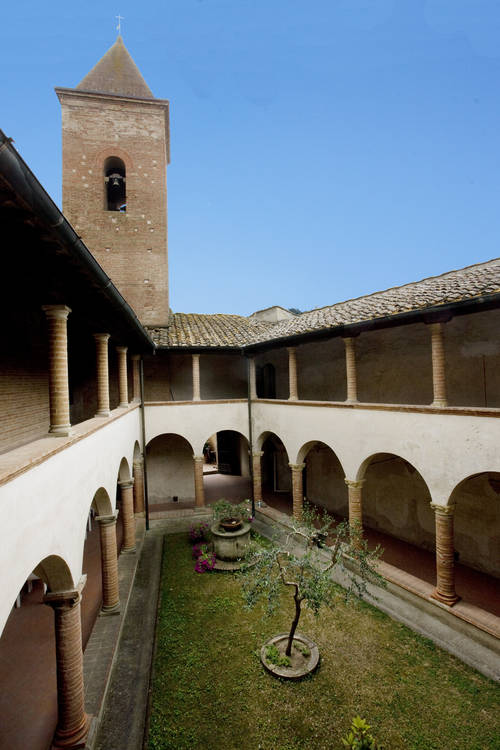
CERTALDO (FI), Sacred Art Museum, Cloister – ©Cooperativa Il Girasole
18:00: Return by bus from Certaldo to Florence Santa Maria Novella Station
From Florence Santa Maria Novella Station to Milan Central Station : Freccia Rossa
Train at 19.00